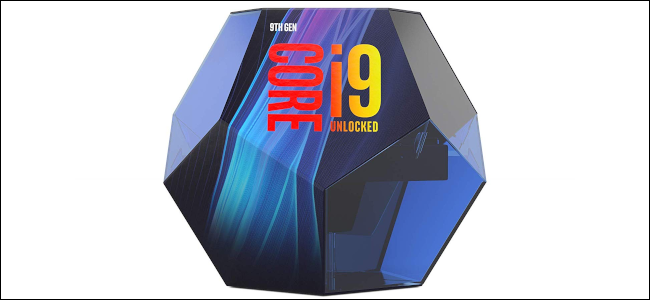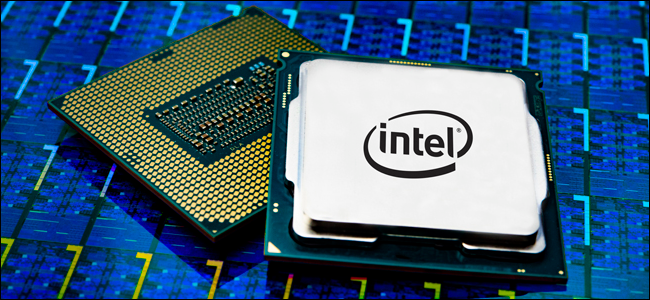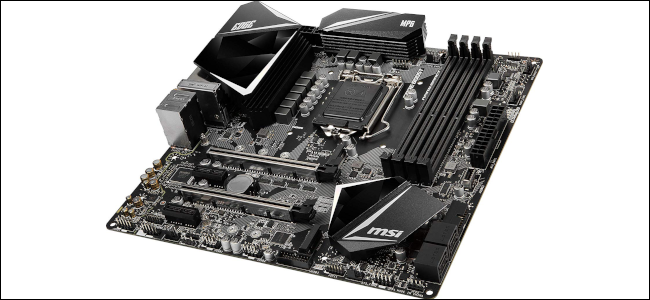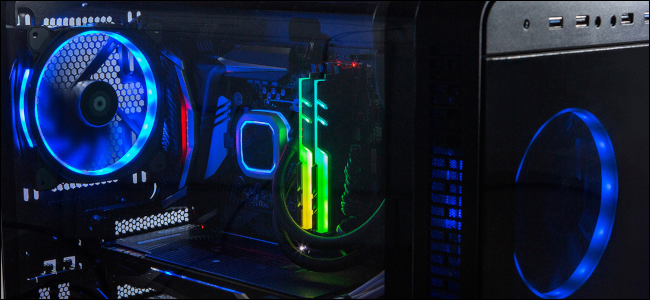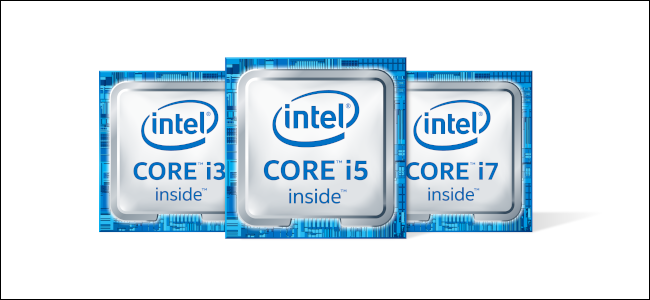Quick Links
While AMD is making inroads, Intel is by far the number one choice in computer processors. Core processors are great chips for a desktop or laptop, but what's the difference between Core i3, i5, i7, i9, and X?
What's a Core Processor?
Intel Core processors first came to the desktop in mid-2006, replacing the Pentium line that had previously comprised Intel's high-end processors.
The Core "i" names are primarily "high level" categorizations that help differentiate processors within a given generation. A specific Core "i" name doesn't mean the processor has a certain number of cores, nor does it guarantee features, like Hyper-Threading, which allows the CPU to process instructions faster.
Feature specifics can change between generations. As technology advances, it becomes cheaper to create higher-performing, low-end parts. It also means that features once found in parts like a Core i3 can disappear from the class entirely.
General performance in similar CPUs also changes between generations. Low-level improvements to how CPUs process information result in generally better performance, sometimes, at lower clock speeds than previous families of CPUs.
Therefore, the differences between Core i3, Core i5, and Core i7 designations matter most within its respective generation. For example, a seventh-generation "Kaby Lake" Core i7, and a third-generation "Ivy Bridge" Core i7 might run at similar speeds with similar core counts. This is generally meaningless, though, as the newer part is still going to perform better---check out this comparison at UserBenchmark as an example.
With that in mind, there are a few guideposts you can use to understand what all the different parts mean.
Core i3: The Low End
Intel Core i3 processors are where the Core lineup starts for each generation. In general, Core i3 processors have lower core counts than higher-grade CPUs. This used to mean that Core i3's started with dual-core processors, but for recent generations, that core count has gone up to four on the desktop.
Those earlier dual-core Core i3's also tended to have four threads, also known as Hyper-Threading. Intel has elected not to double the thread count in recent Core i3 generations; instead, it's building CPUs with four cores and four threads.
Core i3 processors also have lower cache sizes (onboard memory). They handle less RAM than other Core processors and have varying clock speeds. At this writing, the ninth-generation, Core i3 desktop processors have a top clock speed of 4.6 GHz; however, that's only the higher-end Core i3-9350K.
Core i5: The Lower Mid-Range
A step up from Core i3 is the Core i5. This is often where bargain-hunting PC gamers look for solid deals on processors. An i5 typically lacks Hyper-Threading, but it has more cores (currently, six, rather than four) than Core i3. The i5 parts also generally have higher clock speeds, a larger cache, and can handle more memory. The integrated graphics are also a bit better.
You see new Core i5 processors with Hyper-Threading on laptops, but not desktops.
Core i7: The Top Takes a Step Back
As of 2017, Core i7 CPUs had Hyper-Threading on desktops, but the more recent generations do not. These processors have higher core counts (up to eight in the ninth generation) than the i5's, a larger cache, and a bump in graphics performance, but they have the same memory capacity as the Core i5's (although, that could change in the future).
Core i9: The New Leaders
The Core i9 is at the top of the Intel Core pack. This is where you find many top-performing processors, like the Core i9-9900K---a current favorite for gaming.
At the Core i9 level in the current ninth-generation CPUs, we see eight cores, 16 threads, a larger cache than the Core i5 processors, faster clock speeds (up to 5 GHz for boost), and another bump in graphics performance. However, Core i9 CPUs still have the same maximum memory capacity as the Core i5.
Core X: The Ultimate
Intel also has a "prosumer" range of fancier, high-end desktop (HEDT) processors for enthusiasts, gamers, content creators, or anyone else who needs that level of performance.
In October 2019, Intel announced new Core X parts that range from 10 to 18 cores (Core i9s max out at eight). They include Hyper-Threading, and high boost clocks, although, not necessarily higher than Core i9 CPUs. They also have a higher number of PCIe lanes and can handle more RAM, and they have a much higher TDP than the other Core parts.
Which Should You Buy?
Core designations refer to relative improvements within a specific generation of processors. As the Core number increases, so do the capabilities of the processors, including higher core counts, faster clock speeds, more cache, and the ability to handle more RAM. At Core X, you also usually get more PCIe lanes.
If you're a gamer, look for Core i7 and higher. You can definitely game with a newer Core i5, but you'll get more future-proofing with a Core i7 and up. Content creators should look at Core i7 and Core i9 CPUs, as you'll want those sweet threads.
For everyday tasks, like web browsing, spreadsheets, and word processing, a Core i3 will get the job done.
Something to keep in mind while you shop, though, is not all Intel Core CPUs have integrated graphics. These processors end with an "F" to designate that they come without a GPU, such as the Core i3-9350KF, i5-9600KF, and i9-9900KF.

